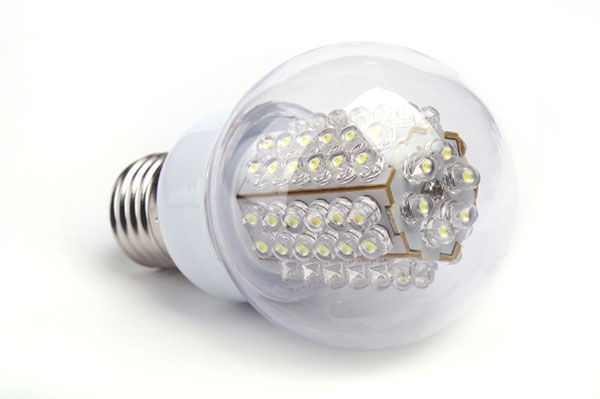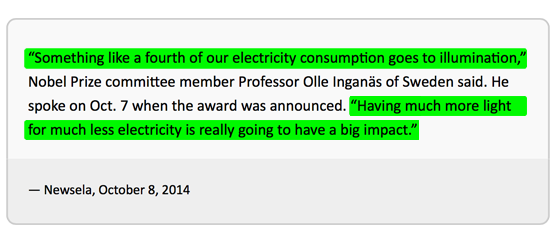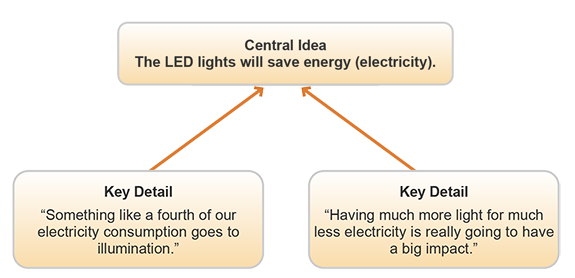Learn It Part 2
Now that you understand how to find the central idea of a text, let’s take a look at an example. Remember that text features, like titles, can be key details and clues to the central idea. Read this title of a news article:
“Physics team that discovered new lightbulb wins Nobel Prize.”
Think about the title. What questions do you have?
You may be wondering, “What is a physics team?” or “What is a Nobel Prize?”
Let’s dig a little deeper. Why do you think the author wrote the article?

This is a close up of an LED lightbulb.
A bigger question like, “Why was this lightbulb so important that it would win a prize?” may top your list of questions.
Let’s go ahead and read “Physics team that discovered new lightbulb wins Nobel Prize Opens a new window” to find the central ideas in the text. Open the link and read the entire article through once to get a sense of what the article is all about.
Now let’s go back and focus on the first three paragraphs of the article. Do these paragraphs include key details, or significant pieces of information, that help convey a central idea?
The Nobel Prize is the highest award a scientist can receive. Each year it is given out in different fields of science and the arts — even poetry. A committee in Sweden votes on who deserves the award.
In addition, each winner, or team of winners, receives a $1.1 million prize.
This year the award in physics went for a discovery of a new lightbulb. It was given to Isamu Akasaki, Hiroshi Amano and Shuji Nakamura. In the 1990s they discovered blue light-emitting diodes — we call them LEDs.
— Newsela Opens a new window, October 8, 2014
You read many facts in the first section, such as how much money is awarded for the Nobel Prize. That’s interesting to know but is that the reason that the author wrote this article? No, that is not a key detail.
Let’s return to one of our big questions, “Why was this lightbulb so important that it would win a prize?” We need to understand the importance of this particular lightbulb.
Read this excerpt from the last paragraph in the first section of the article:
“Something like a fourth of our electricity consumption goes to illumination,” Nobel Prize committee member Professor Olle Inganäs of Sweden said. He spoke on Oct. 7 when the award was announced. “Having much more light for much less electricity is really going to have a big impact.”
— Newsela Opens a new window, October 8, 2014
Click Show Answer to see how key details in this paragraph help to convey the central idea.
These key details help us infer the central idea by describing the benefit of the scientists’ discovery. Click Show Answer to see the central idea.
Each detail supports and expands the idea that a team of scientists received the Nobel Prize in physics for discovering LED lights, which provide energy-saving benefits in many common electronics.
Now that you understand how to use key details to determine the central idea of a text, go to the next page to practice this skill.





